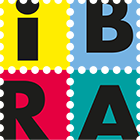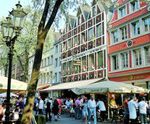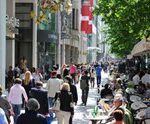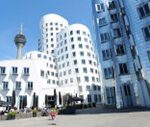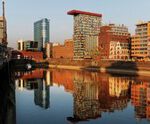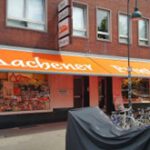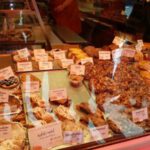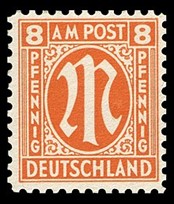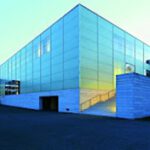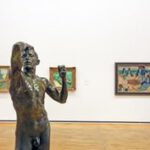_____
Excursion program
Dear IBRA 2023 guests from far and near,
the presentation of worldwide philately in the halls of Messe Essen from 25 to 28 May 2023 is a great thing. Many exhibitors from all continents will present high-quality, unique exhibits in great diversity. We are grateful for this and also proud, and so the organising team also feels the need to be good hosts for the guests from all over the world.
Being a good host not only means preparing the best possible exhibition, it also gives those who wish the chance to get to know our Germany, and in particular the large federal state of North Rhine-Westphalia, a little better. We have therefore developed an excursion programme with guided tours in German and English, for which visitors from Germany and abroad are welcome to register.
The following excursions have been planned:
Wednesday, 24 May 2023, 1.00 p.m. to about 6.00 p.m:
Trip to DÜSSELDORF, the capital of the federal state of North Rhine-Westphalia
Friday, 26 May 2023, 8.30 a.m. to around 6.00 p.m.:
Trip to AACHEN, the old imperial city of Germany
Saturday, 27 May 2023, 10.30 a.m. to approximately 2 p.m:
Visit of the UNESCO World Cultural Heritage ZECHE ZOLLVEREIN in ESSEN
Sunday, 28 May 2023, 10.30 a.m. to about 1 p.m:
Visit of the world famous FOLKWANG-MUSEUM in ESSEN
The trips start and end at the Hotel Bredeney in Essen.
Of course you can book all excursions directly in our IBRA Webshop.
Regarding the trip to Düsseldorf on Wednesday, 24 May 2023:

Düsseldorf is the capital of North Rhine-Westphalia and the administrative seat of the Düsseldorf administrative district. Düsseldorf is part of the Rhine-Ruhr metropolitan region with around 10.2 million inhabitants and the Rhineland metropolitan region with 8.7 million inhabitants. The city is situated at the heart of the central European economic area.
Düsseldorf, the metropolis on the Rhine, is one of the five most important economic centres in Germany with strong international ties. In addition, it is the German location with the highest turnover for auditing, management consultancy and clothing fashion, as well as an important finance and stock exchange centre. It is also a leading place for the art trade in Germany.
What are you going to experience?
In an enjoyable, entertaining and informative way, a guide will accompany you in your bus on a sightseeing tour of Düsseldorf. He will show you the most attractive places in Düsseldorf, the vibrant metropolis on the Rhine with its successful combination of tradition, modernity and trends.
The city of Düsseldorf is very lively and diverse and the joie de vivre in this metropolis can be felt everywhere. The bus tour takes you through the city centre, along Königsallee, one of the world's most elegant promenades and shopping miles, through the Japanese quarter called 'Little Tokyo', along the Hofgarten, Düsseldorf's 'green lung', over the Düsseldorf cable-stayed bridges with panoramic views of the Rhine and the Old Town, through Oberkassel on the left bank of the Rhine with its Art Nouveau houses, the preferred residential district of celebrities, artists and athletes in Düsseldorf, and from there to the 240 m high Rhine Tower and the Media Harbour. From there the route continues through the city centre to Burgplatz in the heart of Düsseldorf's old town (end point). Short walking tours through the Media Harbour and then through the Old Town of Düsseldorf (short visit to an Old Town pub offering Altbier) and along the Rhine embankment promenade, a unique feature in Germany, round off the city tour.
Costs for bus ride, city tour and guided tour of the old town (without drinks) in English and German: € 40 per person
Regarding the trip to Aachen on Friday, 26 May 2023:
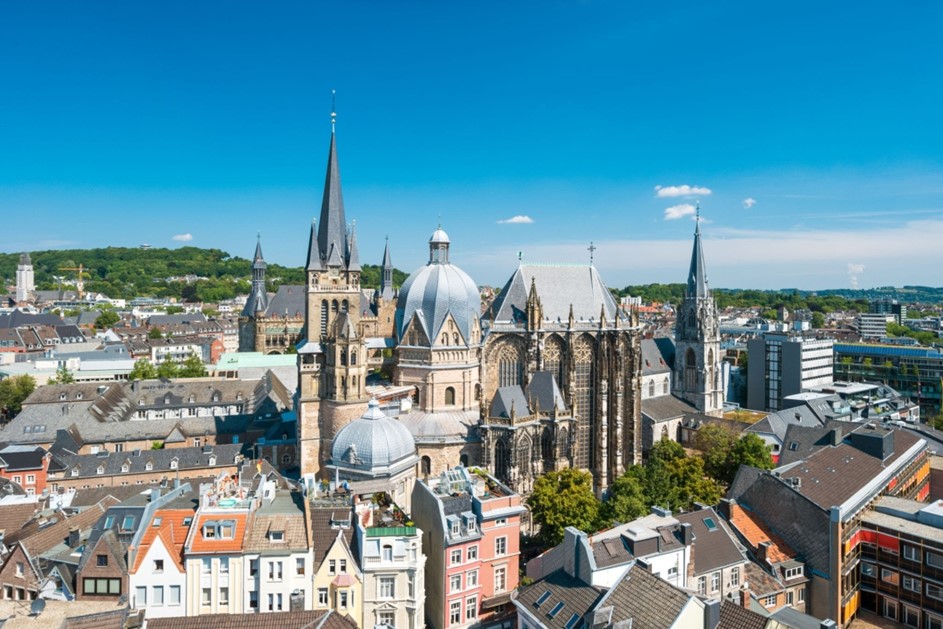
Aachen is a large city in the Administrative District of Cologne in North Rhine-Westphalia. In 1890, Aachen exceeded 100,000 inhabitants for the first time and has been the westernmost German city ever since. Aachen has borders with the Netherlands and Belgium.
The city's landmark, Aachen Cathedral, dates back to the Palatine Chapel of the Royal Palace of Aachen founded by Charlemagne, which is considered a masterpiece of Carolingian architecture. Together with the cathedral treasury, the cathedral was the first German and the second cultural monument in the world to be inscribed on the UNESCO World Heritage List in 1978. The city is the episcopal see of the Aachen diocese and the venue of the annual CHIO Aachen equestrian tournament. Furthermore, it is an important location of the German pastry industry, in particular due to the Aachener printen, a local speciality.
Owing to the border location "in the heart of Europe", there are numerous cultural and especially architectural influences from the neighbouring regions, the Belgian-Dutch area. It is no doubt not least due to this European character - Charlemagne, who made Aachen the political, cultural and spiritual centre of his empire, was called Pater Europae ("Father of Europe") during his lifetime - that ever since 1950 the International Charlemagne Prize has been awarded here annually to personalities from Germany and abroad for services to the European unification process.
What are you going to experience?
City tour and individual visit of the cathedral
The tour guide in Aachen will meet us at 11 a.m. at Theaterplatz and show us the historically interesting places in the old town. Duration about 70 minutes. From there we go to the restaurant "Ratskeller" (meal on a self-pay basis).
Aachen Cathedral
From there it is a short walk to an individual visit (no guided tour) of the cathedral. Aachen Cathedral is the bishop's church of the Aachen diocese and the city's most important landmark. The cathedral consists of several partial buildings whose respective periods of origin range from the early Middle Ages to the late modern era. The Carolingian octagon, formerly the palatine chapel of the Aachen royal palatinate, is the most important architectural example of the Carolingian Renaissance. Charlemagne had the central building built towards the end of the eighth century as the core of his palace complex.
In the course of history, the function of the church building changed from the once Carolingian Palatine Chapel, through the Minster Church of St. Mary's Abbey, into the Episcopal Cathedral of the present day. As the mausoleum of Charlemagne, the collegiate church was the coronation site of Roman-German kings from 936 to 1531. From the 14th century onwards, Aachen evolved into an important place of pilgrimage, with the shrine pilgrimage taking place every seven years.
The King's Throne of Aachen stands in the western gallery bay, on the upper floor opposite the choir. The throne is a plain marble chair, probably made of spolia from the Church of the Holy Sepulchre in Jerusalem. The throne's appearance and location have not been changed over the centuries. Between 936 and 1531, 30 German kings ascended this throne after being anointed and crowned at the main altar.
Everybody needs something sweet: e.g. Aachen printen
Therefore, the printen Bakery Klein is awaiting the tour group at 3.30 pm. Aachen printen are a special kind of brown gingerbread that has been baked in Aachen since around 1820. The name "printe", on the other hand, existed much earlier and developed from the English "print" and the Dutch "prent". It stands for "tool for pressing" or "imprinted image" or "imprint". The name refers to the use of elaborately carved and decorated wooden moulds into which the dough was inserted and pressed during the production of the image bread of the time, which was introduced in the 15th century.
If there is time left, the bus will return to Essen at 4.30 p.m. via Max-Straße in Aachen. On Max-Straße you can find the post office where the first AM Post stamps were sold as early as 19 March 1944, a few weeks before the surrender of the German Reich. It was already clear as early as in March 1944 that postage stamps with the inscription "AM POST" (= Allied Military Post) were to be put into circulation after the occupation of Germany.
The Americans in particular insisted on introducing new stamps to express the occupation and the new beginning and to prevent the continued use of existing stamps with overprints or something similar. The central motif of the AM POST stamps by William A. Roach is an "M" for the currency "Mark" framed by ornaments and surrounded by the nominal and the inscription "DEUTSCHLAND". By all means, the national identity of the occupied country was to be preserved.
Costs for bus trip and guided tour of the old town in English and German: €55 per person.
Restaurant and printen bakery on a self-pay basis
Trip to the World Heritage Site ZECHE ZOLLVEREIN on Saturday 27 May 2023:
On 14 December 2001, the Zollverein colliery and Coking Plant was registered as the "Zollverein Colliery Industrial Complex" on the UNESCO World Heritage List. Since then, the former industrial complex has officially been one of the world's most important cultural sites.
In its justification, UNESCO named two central criteria for the decision: "The Zollverein Coal Mine Industrial Complex in Essen is a remarkable industrial monument because its buildings are outstanding examples of the application of the design concepts of Bauhaus architecture in an overall industrial context. The technical and other structures at Zollverein XII document a crucial phase of Europe's traditional heavy industry, in which architectural concepts of exceptional quality were sensitively and reliably applied."
Designed right down to the details of the lamps, stair railings and door handles, the completely preserved complex of the Zollverein colliery and coking plant is a total work of art and exemplarily represents the social, economic, aesthetic and industrial history of the coal and steel age.
Even today, the symmetrical arrangement of the buildings on two axes of vision is captivating. The 20 individual buildings depict the technical work and production processes of coal mining, according to the Bauhaus maxim that form should be oriented towards function. This functional principle, based on the idea of efficiency "form follows function", connects Zollverein with the forward-looking visions of the Bauhaus period in the 1920s, which also became the breeding ground for modernity in the Ruhr region, the industrial West.
The neo-objective architecture of the steel trusses at the Zollverein Coal Mine XII, which went into operation in 1932, and at the Zollverein Coking Plant, which was built in the 1950s in the same formal idiom, represent an independent variant of the Bauhaus concept. It is an expression of the close connection between industrial design and architecture, influenced the industrial architecture of subsequent generations and earned Zollverein the reputation of being the "most beautiful coalmine in the world" even when it was still in operation.
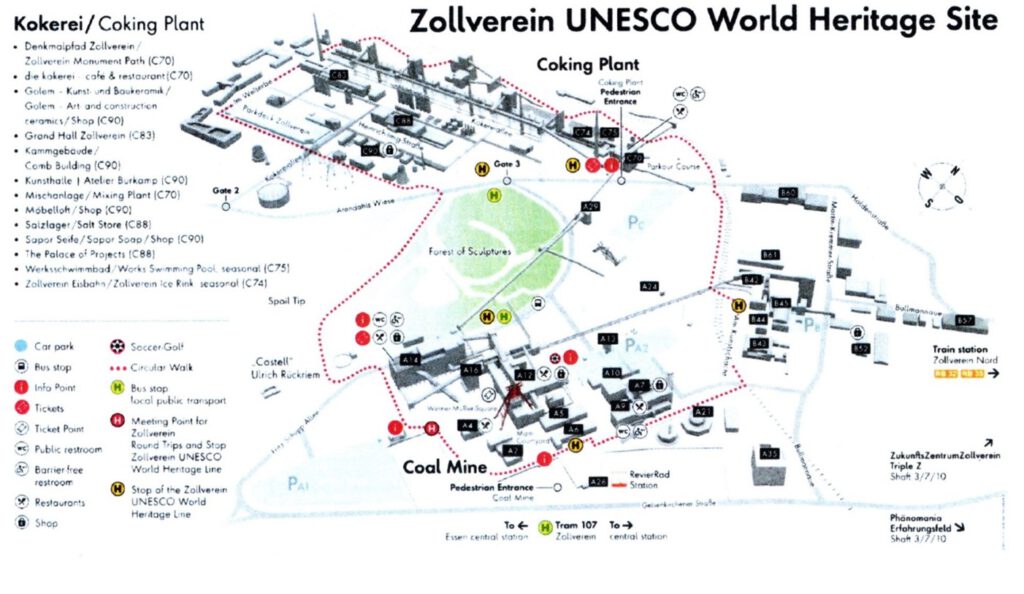
The experience-filled excursion on Saturday will take us to this world heritage site of the industries that have shaped Essen and the Ruhr region for centuries.
The bus departs at 10.30 a.m. and we return at around 2.30 p.m.
During this guided tour, visitors will learn about the production processes of what was once the largest and most powerful colliery in the world.
On the way from the shaft hall, where the coal used to arrive, through the Wipperhall, the screening plant and the workshops, the guided tour guests will learn details about the working and living conditions of the Zollverein miners. They also gain insight into the architecture, nature and the transformation of Zollverein from a mine to a modern cultural location."
Costs for the bus ride and guided tour in English and German: 20 € per person
Visit of the FOLKWANG MUSEUM in Essen on Sunday 28 May 2023:
The bus will take us directly to the museum in Essen at 10.30 am. There, a guided tour in German/English of the museum's permanent exhibition is planned. Return to the Hotel Bredeney around 1.00 pm.
The Museum Folkwang is one of Germany's most renowned art museums with an outstanding collection of 19th century painting and sculpture, classical modernism and art after 1945, as well of photography. In addition, the Museum Folkwang also houses comprehensive collections of graphic art, archaeology, world art and decorative arts as well as posters. Top works by van Gogh, Cézanne, Gauguin meet works by Rothko, Pollock, Richter. It is the first German art museum of its size to grant all visitors free admission to its own collection. Its exhibitions and events make the Museum Folkwang a place of lively exchange with art, culture and life.
The collection focuses on French and German modernist works, especially those from the post-impressionist and expressionist periods, while the early 19th century is represented by important paintings from the Romantic and Classicist periods. In the 1950s and 1960s, substantial convolutions of high-calibre works of US Abstract Expressionism as well as European Informel were assembled. In addition, a diverse collection of video art was formed by a video studio at the museum that was particularly active in the 1970s and 1980s. Today, the steadily growing collection picks up on current trends in international contemporary art.
The collection currently comprises approximately 1500 works by around 500 artists, most of which were created between 1800 and the present. The outstanding collection makes it possible to trace important trends in the development of European and North American modernism up to the present day. Whereas until the 1950s it was mainly paintings and sculptures that were collected, the collection has since opened up to all media and materials in line with artistic developments.
Costs for bus ride, entrance fee and guided tour in English and German: 20 € per person
